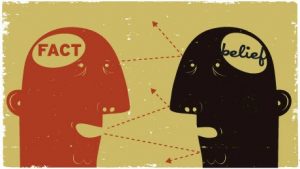Machine learning is a brilliant way to analyse data. You can read more about why in our recent blog post about machine learning in social listening. But it also offers objectivity, which is something us humans struggle to do. No matter how hard we try, biases are programmed within us, and are impossible to avoid completely. Machine learning will work free of these biases though, to produce a more pure and higher quality result each time.
A business requires us to look at all the information available to us and then come to a logical conclusion. However, we’re only human, and there is only so much information the human mind can retain. With that, we always run the risk of leaving out some data, or forgetting about it. Our natural biases then inevitably influence the end result. Here are 3 biases that commonly affect the way we analyse data and make decisions.

The ostrich effect
This is the effect of burying our head in the sand, so to speak, by ignoring and avoiding any information that we don’t like. We may not like it, but if it’s legitimate data that has come up, we should pay attention so that we can proceed in the most valuable way possible.
Anchoring bias
It’s so tempting to just go with the first bit of data we come across. It saves us so much time in the short term to take this information and run with it, after all. This is what is known as anchoring bias. In the long term however, it would be more worthwhile to consider all data.
The bandwagon effect
As the name suggests, this is where we jump on the bandwagon of other businesses and do whatever they are doing. It saves us having to labour over our ideas and insights. But what might work for one business in our industry might not work for another. It’s important that when analysing data all the factors of our business are considered.

How machine learning can beat biases
With machine learning, every piece of information is taken into account, giving a more complete analysis and more accurate pattern recognition, and it is generally done much much faster, with terabytes of data analysed within minutes, and sometimes seconds. Humans however, can miss specific and important patterns, and they may begin to search for invalid connections.
As a machine built for this purpose only has one method of working, it is unable to produce biased results as it has set parameters, unlike humans, who are able to work a task in various ways and can mold the outcome they want, if they wanted to. Machines, then, can produce valuable insights which can be used to advance your business in ways that wouldn’t be possible if humans were doing the same job.
If you would like to know more about AI and how it can help you, please don’t hesitate to get in touch. We would love to hear from you.
